
Bloodwych is a dungeon role-playing video game, a dungeon crawler, developed for the Amiga, Atari ST, MS-DOS, Amstrad CPC, Commodore 64, and ZX Spectrum. Its box featured artwork by Chris Achilleos. The plotline identifies the player as a champion of Trazere who, after recruiting up to three fellow champions, travels through dungeons and mazes fighting creatures along the way to find and destroy the evil Zendick, and banish the Lord of Entropy.

Rick Dangerous is a platform game developed by Core Design for the Acorn Archimedes, Amiga, Atari ST, Amstrad CPC, ZX Spectrum, Commodore 64, and MS-DOS. The game was released in 1989 and published by MicroProse on the Firebird Software label in the UK, and on the MicroPlay label in America. It was also published in Spain by Erbe Software. Later, it was released with two other games, Stunt Car Racer and MicroProse Soccer, on the Commodore 64 Powerplay 64 cartridge. The game was followed by a sequel, Rick Dangerous 2, in 1990. Loosely based on the Indiana Jones film franchise, the game received mixed reviews from critics.

UFO: Enemy Unknown, also known as X-COM: UFO Defense in North America, is a 1994 science fiction strategy video game developed by Mythos Games and MicroProse. It was published by MicroProse for DOS and Amiga computers, the Amiga CD32 console, and the PlayStation. Originally planned by Julian Gollop as a sequel to Mythos Games' 1988 Laser Squad, the game mixes real-time management simulation with turn-based tactics. The player takes the role of commander of X-COM – an international paramilitary and scientific organization secretly defending Earth from an alien invasion. Through the game, the player is tasked with issuing orders to individual X-COM troops in a series of turn-based tactical missions. At strategic scale, the player directs the research and development of new technologies, builds and expands X-COM's bases, manages the organization's finances and personnel, and monitors and responds to UFO activity.

Mercenary is a 3D action-adventure game written for the Atari 8-bit computers and published by Novagen Software in 1985. It was converted to the Commodore 64, ZX Spectrum, Amstrad CPC, Atari ST, Amiga, and Commodore 16/116/Plus/4. The game uses vector graphics renderings of vast, sparse environments and has open-ended gameplay. It was also released as Mercenary: Escape from Targ and Mercenary: A Flight Simulator Adventure.
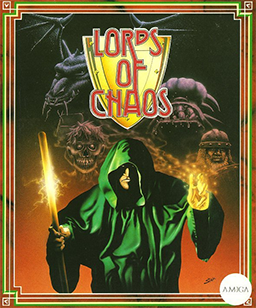
Lords of Chaos is a turn-based tactics tactical role-playing game published by Blade Software in 1990. It is the sequel to Chaos and an ancestor of the popular X-COM series of games, also written by Julian Gollop. In Lords of Chaos each player controls a wizard who can cast various magic spells. The spells have various effects, for example summoning other creatures, or damaging opposing creatures and wizards. The game can be played against a computer-controlled opponent or by up to four human players.
Julian Gollop is a British video game designer and producer specialising in strategy games, who has founded and led Mythos Games, Codo Technologies and Snapshot Games. He is known best as the "man who gave birth to the X-COM franchise."
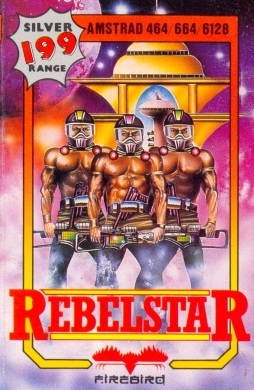
The Rebelstar games are a series of turn-based tactics video games designed by Julian Gollop. Rebelstar Raiders was published in 1984 by Red Shift for the ZX Spectrum. It was reworked in machine code as Rebelstar, published by Firebird in 1986. A sequel, Rebelstar II, was published in 1988 by Silverbird. Rebelstar, but not its sequel, was also adapted for the Amstrad CPC home computer.
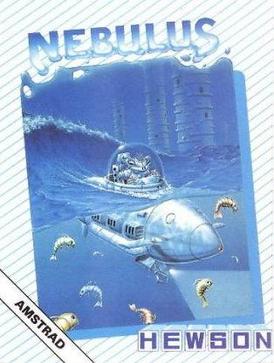
Nebulus is a platform game created by John M. Phillips and published by Hewson Consultants in the late 1980s for home computer systems. International releases and ports were known by various other names: Castelian, Kyorochan Land, Subline, and Tower Toppler.

Rick Dangerous 2 is a platform game developed by Core Design for the Amiga, Atari ST, Amstrad CPC, ZX Spectrum, Commodore 64, and MS-DOS. It was released in 1990 and published by Micro Style as a sequel to Rick Dangerous.
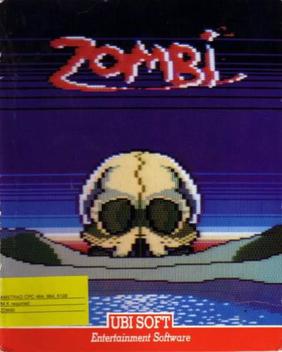
Zombi is an icon-driven action-adventure video game. It was Ubisoft's first publication, released in 1986. It was programmed by Yannick Cadin and S. L. Coemelck, with graphics by Patrick Daher and music by Philippe Marchiset.

RoboCop 2 is a platform shooter video game based on the 1990 film of the same name. The game was released for several platforms, including Amiga, Amstrad GX4000, Atari ST, Commodore 64, Game Boy, Nintendo Entertainment System, and ZX Spectrum. Ocean Software developed and published several versions, and Data East manufactured an arcade version.
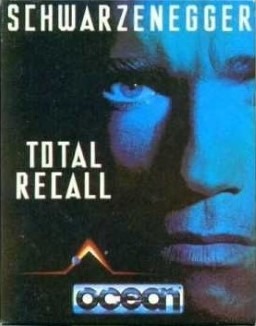
Total Recall is a 1990 platform game developed and published by Ocean Software that was released for the Commodore 64, Amiga, Amstrad CPC, ZX Spectrum, Atari ST, and Nintendo Entertainment System. Total Recall is based on the 1990 film of the same name.

Myth: History in the Making is a 2D platform game developed and published by British publishing house System 3 for the Commodore 64, Amiga, Amiga CD32, Amstrad CPC and ZX Spectrum. It was also released on the NES as Conan: The Mysteries of Time. It was officially announced for Atari ST and a preview version was available, but the full version was never released.
Red Shift was a video game publisher active between 1983 and 1985. They were well known for their strategy games and had a close working relationship with Julian Gollop and Games Workshop.
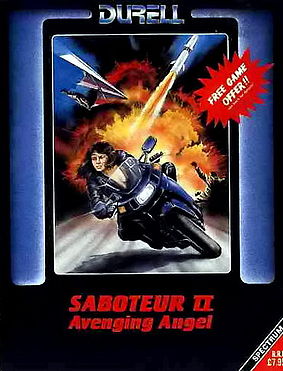
Saboteur II: Avenging Angel, also known as Saboteur 2, is an action-adventure game created by Clive Townsend and released by Durell Software in 1987 for the ZX Spectrum, Amstrad CPC, Commodore 64, and MS-DOS compatible operating systems. A sequel to 1985's Saboteur, the player controls a sister of Ninja from the first game on a mission to avenge his death. Saboteur II was one of the first action-adventure games with a female protagonist and was well received by critics.

Fun School is a series of educational packages developed and published in the United Kingdom by Europress Software, initially as Database Educational Software. The original Fun School titles were sold mostly by mail order via off-the-page adverts in the magazines owned by Database Publications. A decision was made to create a new set of programs, call the range Fun School 2, and package them more professionally so they could be sold in computer stores around the UK. Every game comes as a set of three versions, each version set to cater for a specific age range.

Space Crusade is a 1992 video game based on the Space Crusade board game. It is the first video game set in the Warhammer 40,000 universe. Gremlin Graphics Software Ltd. released the video game version of Space Crusade in early 1992. It was available on Amiga, Atari ST, MS-DOS, Amstrad CPC, Commodore 64, and ZX Spectrum. It later received an expansion pack, The Voyage Beyond.

The Real Ghostbusters is a 1987 shoot 'em up arcade game developed and published by Data East. It is loosely based on Ghostbusters. In Japan, Data East released it as a non-Ghostbusters arcade game under the title Meikyuu Hunter G. In 1989, Activision published The Real Ghostbusters for Amiga, Amstrad CPC, Atari ST, Commodore 64, and ZX Spectrum.

Ghostbusters II is a 1989 action game based on the film of the same name. It was published by Activision for various computer platforms. British studio Foursfield developed a version for Commodore 64, Amiga, Atari ST, Amstrad CPC and ZX Spectrum, which also got ported to the MSX by New Frontier. It features three levels based on scenes from the film. Dynamix developed a separate version for the DOS, also based on the film. The non-DOS versions were praised for the graphics and audio, but criticized for long loading times, disk swapping, and the final level. The DOS, Commodore 64 and Amiga versions were the only versions released in North America.

Judge Dredd is a 1991 platform shoot 'em up video game based on the character of the same name. It was developed by Random Access and published by Virgin Mastertronic. It was released in Europe in 1991, for the Amiga, Atari ST, Commodore 64, and ZX Spectrum. Critics found the gameplay repetitive.



















